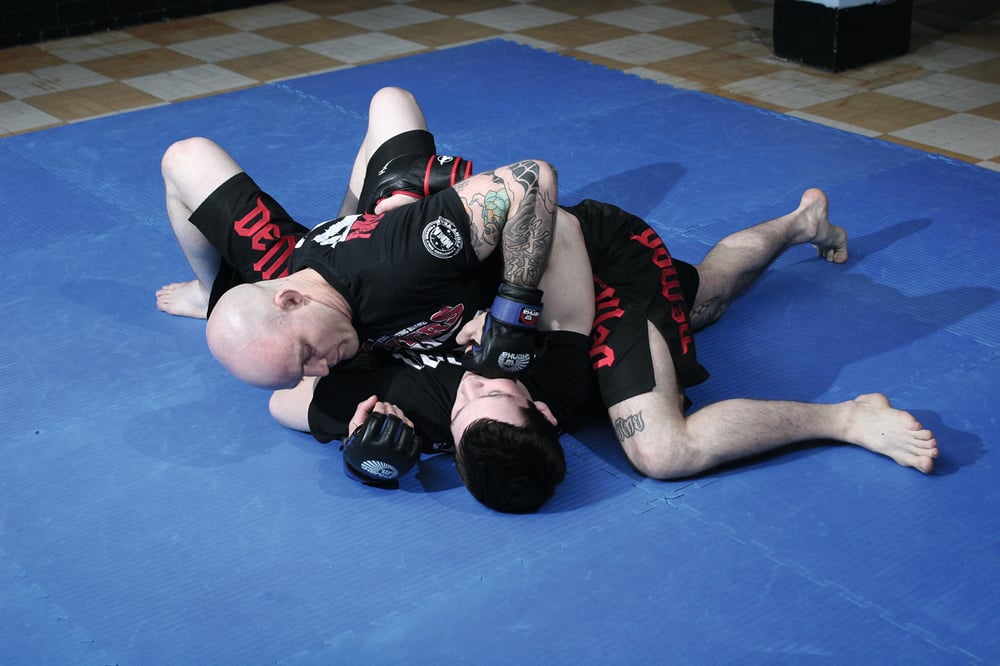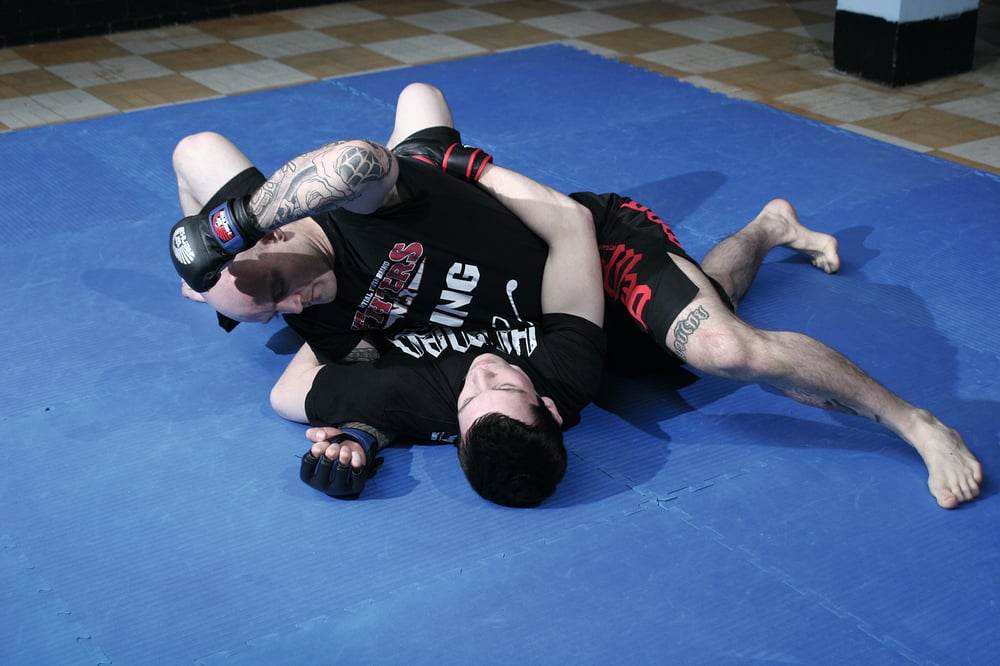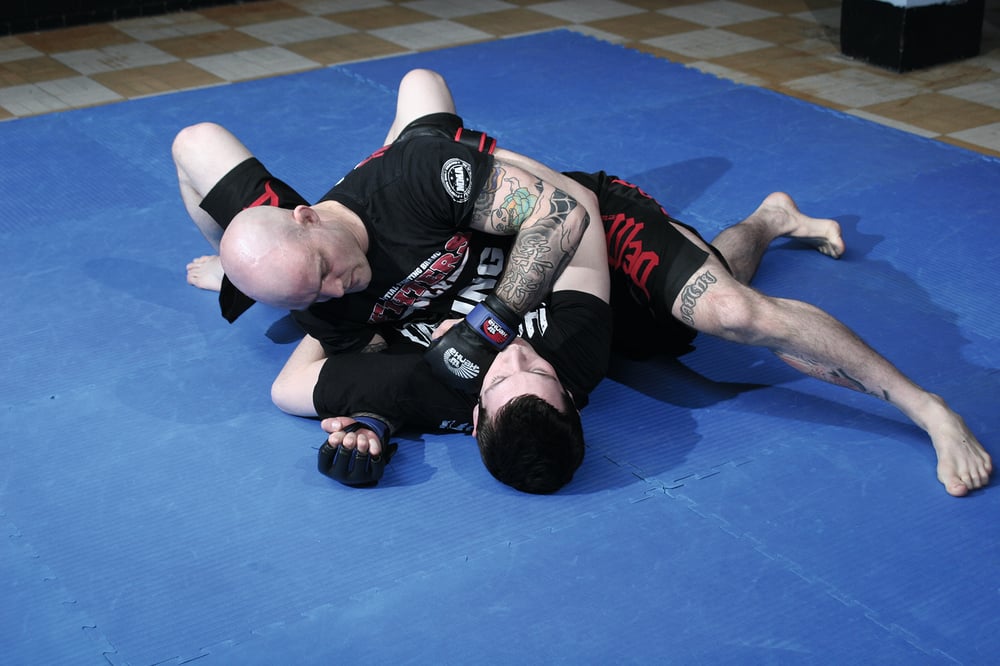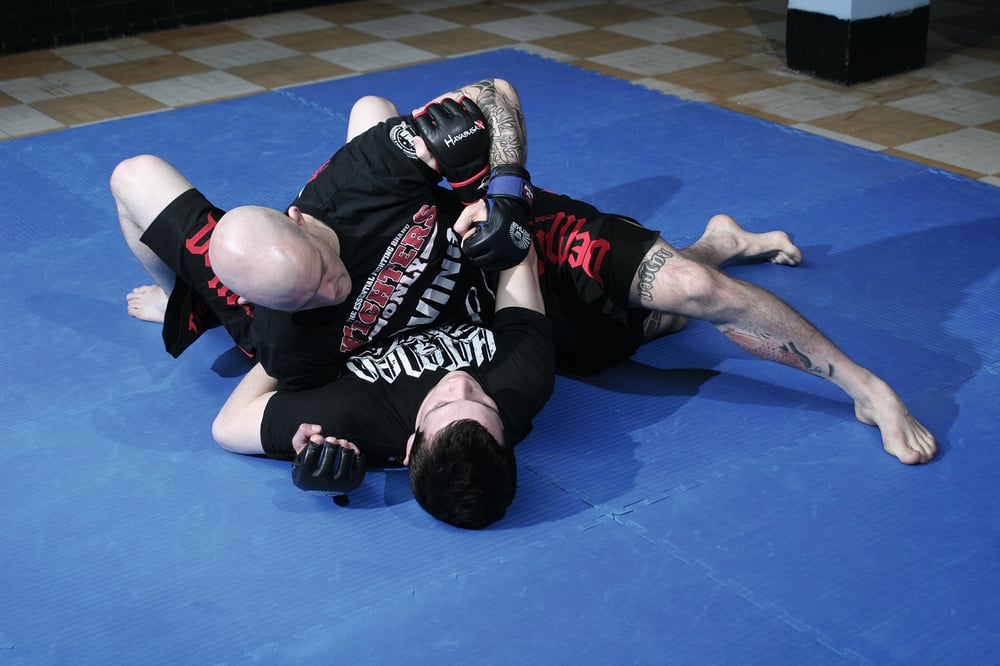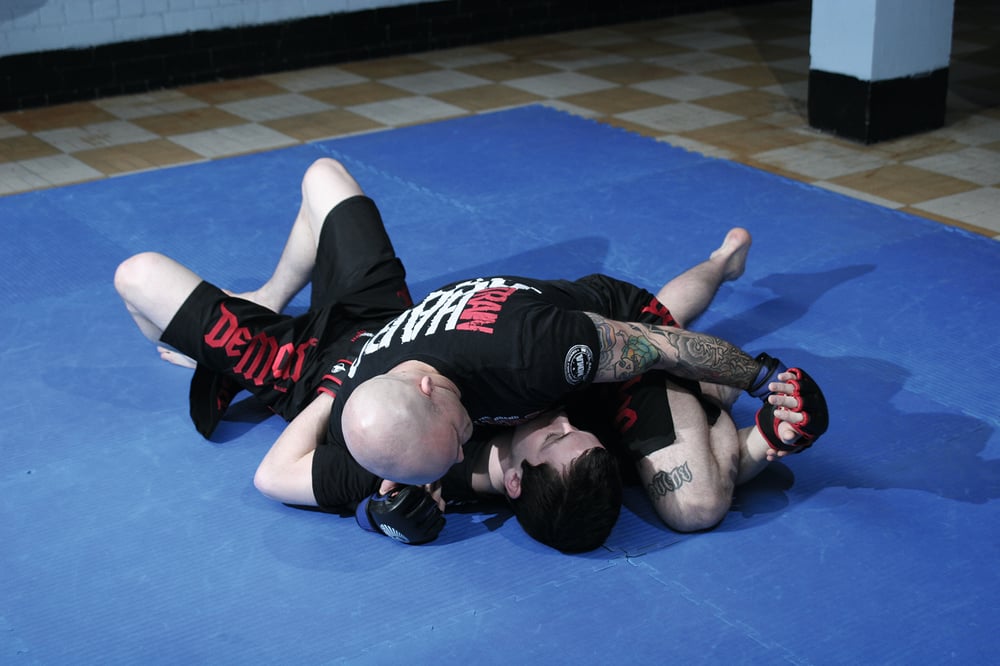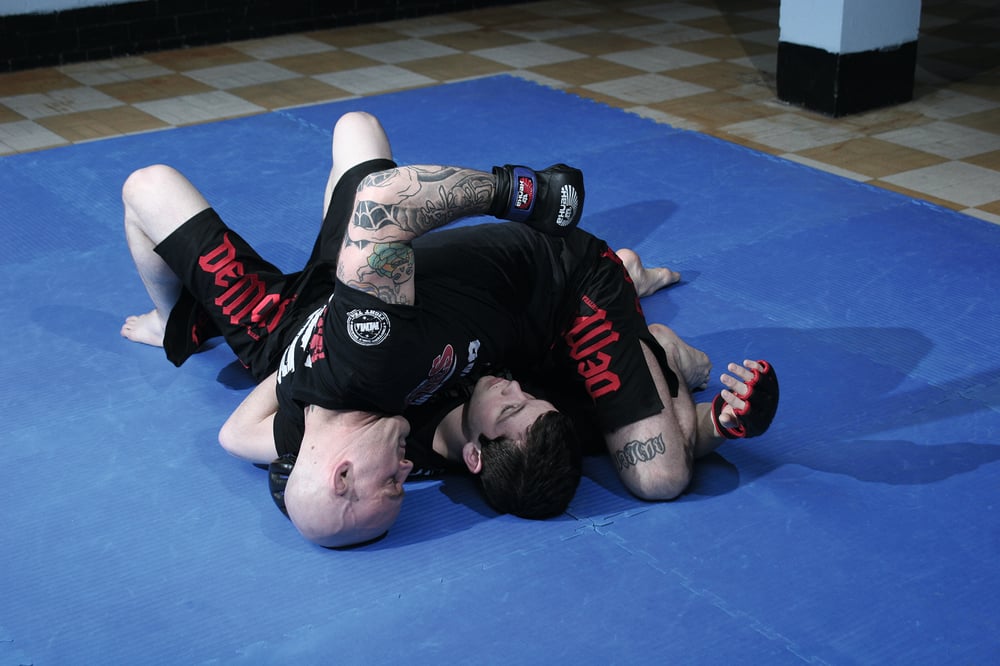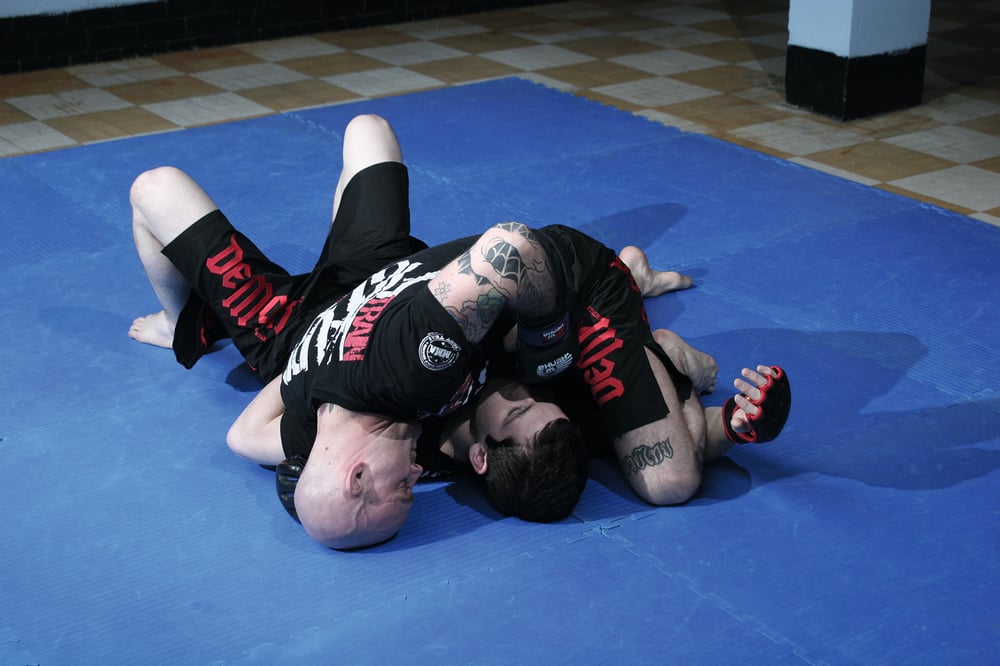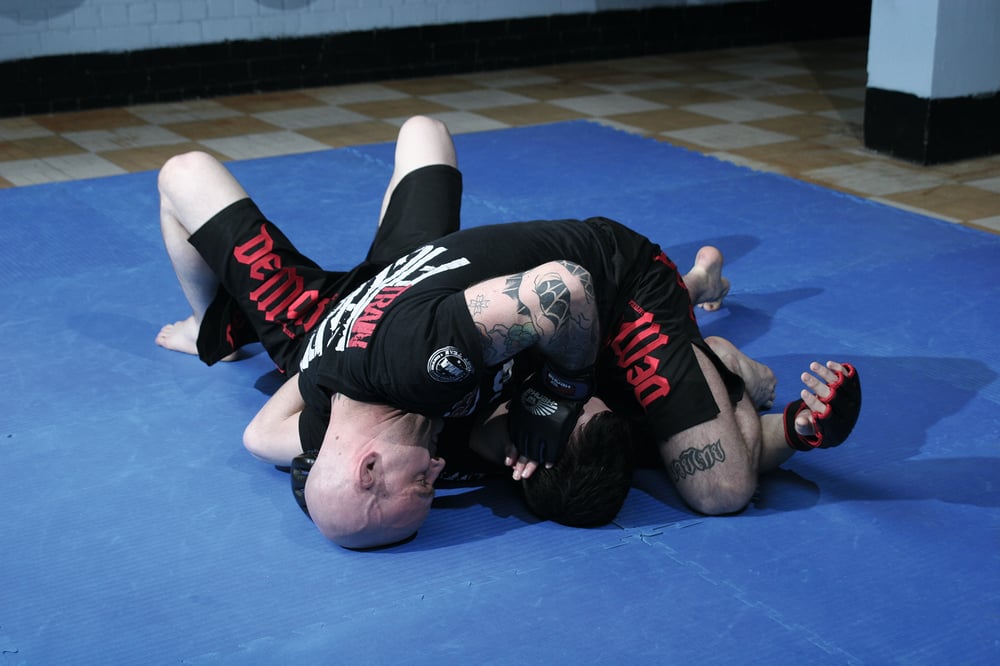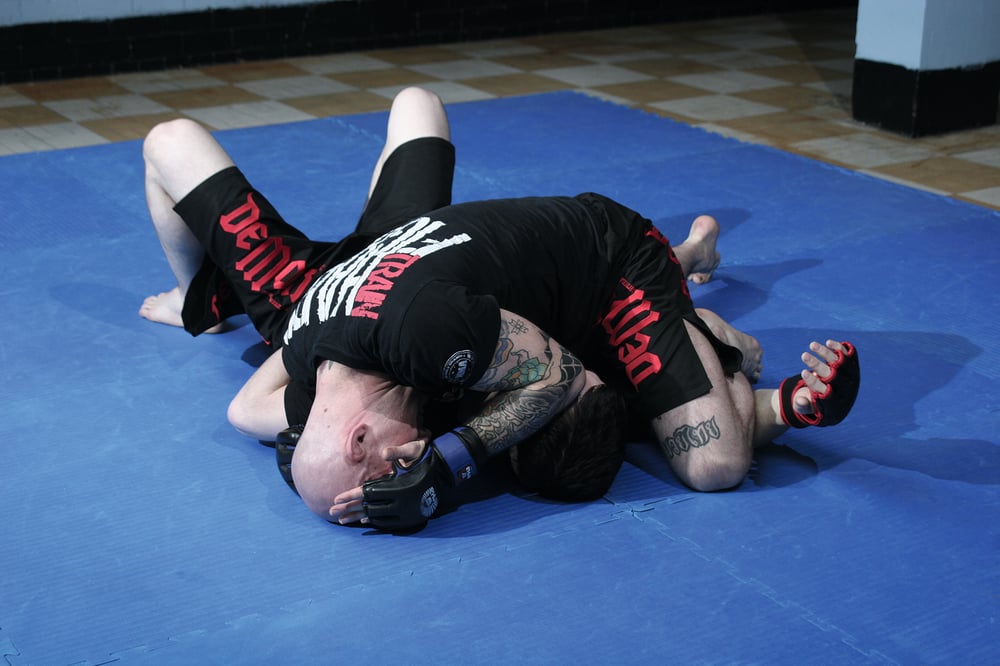
Issue 061
April 2010
With Pete Irving.
Having a good pin is essential. Establishing a solid pin can allow you to rest while your opponent works and continues to tire. If you commit yourself completely to immobilizing your opponent, however, you may not be able to strike effectively. If you are ready to transition with the opponent’s movements, you can afford to free up your fists, elbows and knees to deliver effective strikes. Well-chosen strikes will only enhance your ability to predict your opponent’s next movement.
Effective use of side control
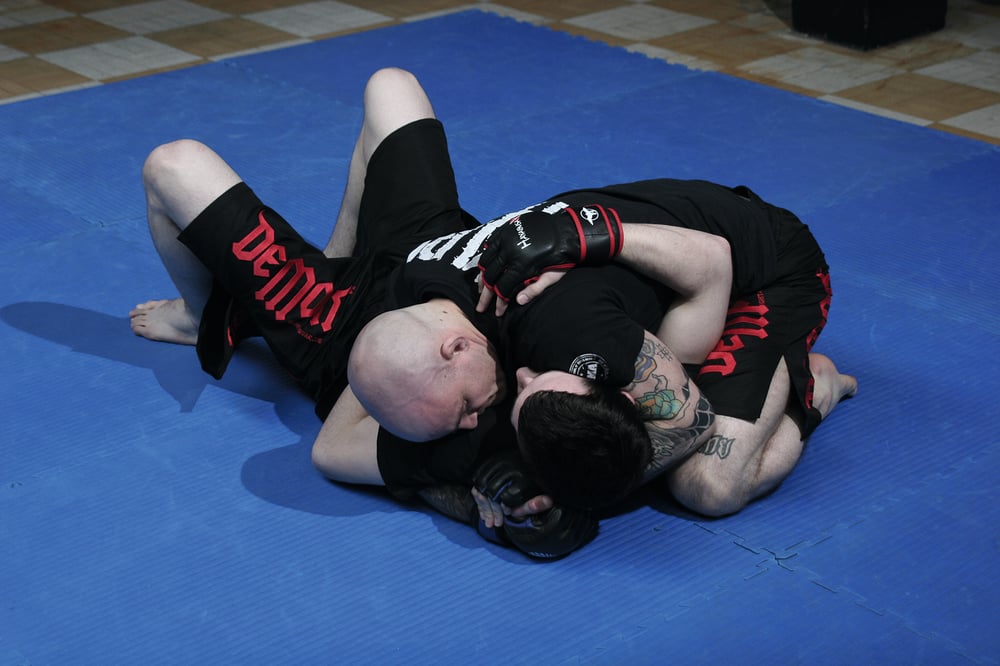
1 Pete has pinned Ryan using a classic jiu-jitsu side control. He has both knees up and an underhook on the far side (supported by a gable grip and shoulder pressure on the near side). Ryan is immobile, but Pete has committed all his weapons to securing the pin and cannot strike.
2 Pete slides his legs back, rotating his torso to keep his weight on Ryan’s rib cage. He maintains a tight underhook on the far side but has freed up his near hand to punch.
3 Pete adds hip power to his punch, rolling his knee back to the mat and straightening his torso as he delivers the punch.
4 Pete allows the punch to continue across...
5 ...delivering a hammer fist on the way back. [Note: Take a look at Ian Freeman vs Paul Cahoon from Cage Rage 26 for an example of this style of side control in action.]
6 Ryan doesn’t allow Pete to throw the same punch the second time, blocking his arm at the elbow with a bicep control.
7 Pete exploits the fact that Ryan has reached out to control his arm and uses the space to slide his knee over Ryan’s elbow.
8 Pete immobilizes Ryan by posting his head on the mat and keeping his shin on Ryan’s forearm, just below the elbow.
9 From here, Pete can drop short punches...
10 ...or post his hand on the face…
11 ...and drop a short elbow. [Take a look at Matt Hughes’ victory over BJ Penn for the best example of this control position.]



